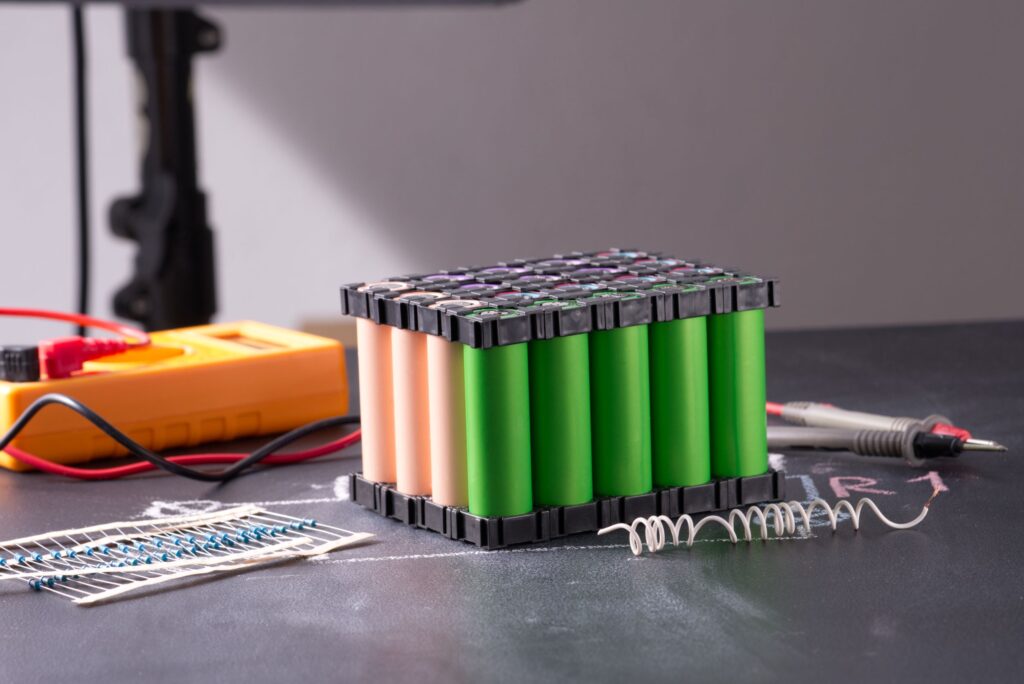Lithium-ion batteries (LIBs) have been increasingly commercialized in the last 30 years. Their high energy density and specific capacity is making them suitable for electronic devices such as laptops, mobile phones and electric vehicles. Most hydrometallurgical LIB recycling routes comprise pre-treatment steps that remove and recover the current collectors (i.e. metallic aluminium and copper) and other components, resulting in a fairly pure cathode material. Subsequently, cobalt and other metals are leached with mineral acids furthermore into the process.
The recycling of cobalt from lithium-ion batteries (LIBs) is crucial for the sustainability of the environment and economy. During hydrometallurgical recycling of LIBs, the cathode material is usually separated from the current collectors’ aluminium and copper at the initial process stages.
The growing electric vehicles (EVs) market leads to increased demand for lithium-ion batteries (LIBs), which in turn causes some concerns on the supply front of raw materials required to make LIBs. Recycling spent LIBs represents one promising approach to address the supply issue in the market right now. From an economic perspective, lithium-ion battery recycling mainly focuses on the recovery of valuable metals facing potential supply risks in the near future.
The recycling methods of spent LIBs mainly include hydrometallurgy processes and pyrometallurgy processes. Pyrometallurgy is widely used for the recovery of Co. Meanwhile, spent LIBs contain valuable metals of Mn, Li, Ni, Co, etc., which will cause the squandering of natural resources without reasonable recycling. Therefore, the recycling of spent LIBs is essential for saving resources and protecting the environment. Pyrometallurgy uses high temperature to facilitate the oxidation and reduction reactions in which transition metals like Ni and Co are reduced from oxides to metals, and recovered in a mixed metal alloy. However studies have shown that the energy required to recycle batteries using pyrometallurgy is detrimental to our environment, thus not successfully achieving the objective of environmental concern and conservation. Historically, the primary objective of Li-ion battery recycling has been the recovery of cobalt, because of its high value and demand. Everything else has always been secondary. However, as cobalt content in the batteries decreases and mandatory recycling regulations requiring recovery of over 50% of the materials come into effect in the European Union, interest has grown in the recovery of various other raw materials. In order to recover Lithium from the spent batteries, the selective pyrolysis method of an arc furnace can be used to convert some electrode materials into cobalt alloys and lithium concentrate.
Since cobalt plays an irreplaceable role in commercial li-ion batteries, and thermal metallurgy has a high efficiency in recovering cobalt rather than Lithium, the economy of this recovery method depends largely on the amount of Co contained in spent LIBs and the fluctuation in the market value of cobalt. Current commercial lithium-ion batteries mainly contain transition metal oxides or phosphates, aluminum, copper, graphite, organic electrolytes containing harmful lithium salts, and other chemicals. Therefore, the recycling and reuse of spent lithium-ion batteries have been paid more and more attention by many researchers. However, due to the high energy density, high safety and low price of lithium-ion batteries have great differences and diversity, the recycling of waste lithium-ion batteries has great difficulties.


